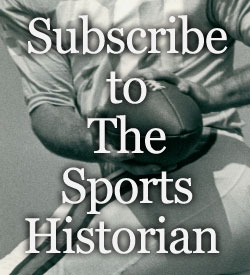James Braid, J.H. Taylor, and Harry Vardon formed the Great Triumvirate that ruled the golf world in the mid-1890s through the mid-1910s. Arguably, Vardon was the best of the three. He is the only person to ever win six British Opens. Also among his 62 professional victories was the 1900 United States Open. The World Golf Hall of Fame (inducted Vardon in the original class of 1974) calls Vardon “golf’s first superstar.”
Born in Grouville, Jersey in 1870, Vardon learned the game as a caddie during his teen years and later took a job as a greenkeeper at Studley Royal Golf Club in Ripon, Yorks in 1890. A year later, Vardon took the job as club professional at Bury Golf Club, a position he held for five years before taking the same position at Ganton Golf Club in Yorkshire.
Vardon became the first professional to wear knickerbockers, famously worn by Payne Stewart in more recent times. Sporting his unusual attire, Vardon won the first of his six British Opens in 1896. He would win the Open again in 1898, 1899, 1903, 1911, and 1914. He finished second four times. Vardon played in three United States Opens, winning in 1900 and finishing second in 1913 and 1920. At the 1913 US Open, 20-year old American amateur Francis Ouimet stunned the golf world by defeating Vardon in an 18-hole playoff. Ouimet’s upset is generally credited as the reason behind the game’s increased popularity in the United States.
Besides his sartorial splendor, Vardon is known for his club grip. The Vardon grip is the one most used by professional golfers today. With this grip, the golfer places the little finger of the upper hand between the index and middle finger of the lower hand while gripping the club. This grip, upright stance, and relaxed swing helped Vardon hit his shots higher and longer than his contemporaries. According to the World Golf Hall of Fame, Vardon had “a swing that repeated monotonously.” Both the PGA Tour of America and the European Tour award trophies named for Vardon—the PGA of America awards the Vardon Trophy to the player with the lowest adjusted scoring average for the year and the Harry Vardon Trophy now goes to the winner of the European Tour’s Race to Dubai, similar to the FedEx Cup in the United States.
In 1903, Vardon was diagnosed with tuberculosis and was in and out of medical facilities battling the disease until 1910. Afterwards, his hands shook while putting. Even though he won two British Opens after contracting the disease, golf historians wonder how many more tournaments Vardon could have won if not for tuberculosis.
In his later years, Vardon designed golf courses, coached golf and wrote instructional books. He passed away in 1937 after a bout with either pleurisy or lung cancer, and in 2000, Golf Digest ranked Vardon the 13th best golfer of all time. Cheers to one of the greats, Harry Vardon!











